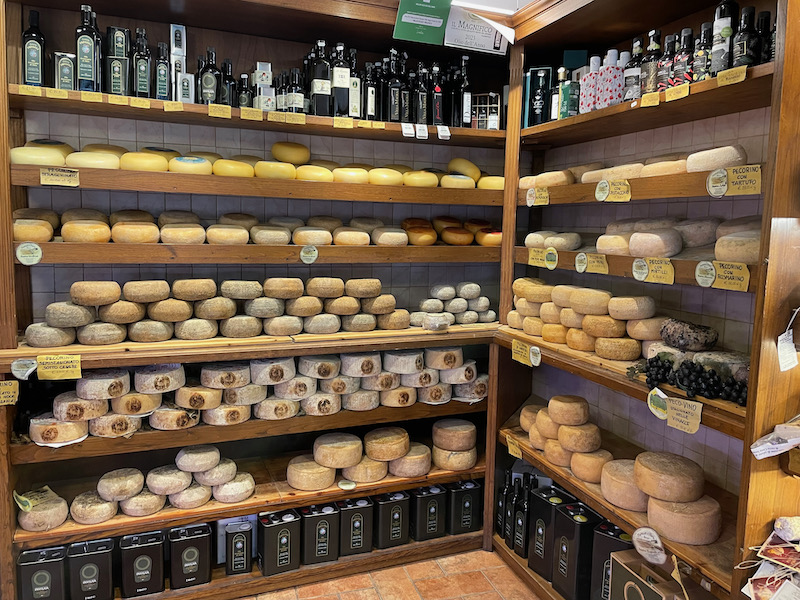Our Blog - Tuscany 2024 Trip - Pienza, Italy
Originally named Corsignano, it is first mentioned in the 9th century. Around 1300, parts of the village became property of the Piccolomini family. Normally I wouldn't mention a specific family (other than the Medici's), but this was an influential family in Tuscany starting in the 11th century. Originally from Siena, they supported the Guelph family and when that family lost power to the Ghibelline family, the family was forced into exile and moved to Pienza. In 1405, Aeneas Silvius Piccolomini was born here, a Renaissance humanist who later became Pope Pius II. Once the Pope, he rebuilt the entire town and renamed it Penza (meaning "city of Pius"). It is a pretty small town, just over 2,000 people (although there were over 4,700 in 1951 ... not sure what happened between 1951 and 1981 when the population went from 4,770 to 2,473.
We entered the town through the Porta al Murello or Porta al Prato, one of the gates into the town, that has a fresco above the entrance. Just below the fresco is a sign that indicates it was destroyed in 1944 and reconstructed in 1955.
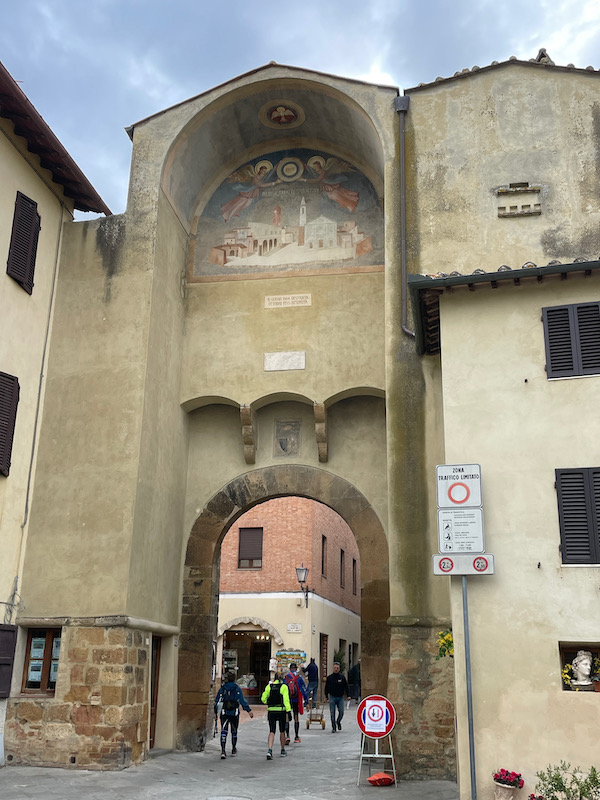
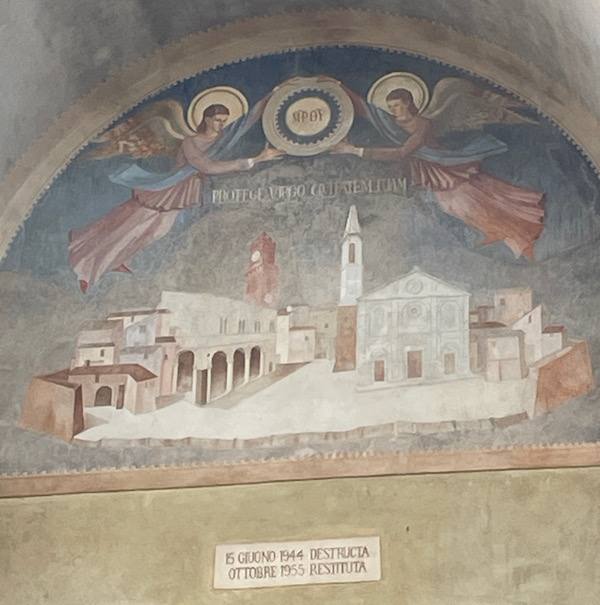
The Pienza Cathedral, built from 1459 and 1462, has a facade that is one of the earliest designed in the Renaissance style. The front is marble while the sides are stone. The bell tower has a Germanic style with the base also stone and the stop being marble. The cathedral plan is also Germanic in nature, called "Hallenkirche" where the side aisles are almost as tall as the nave. Before becoming Pope, Aeneas Silvius Piccolomini had lived in Germany and praised the way light came into the German hall churches in his community.


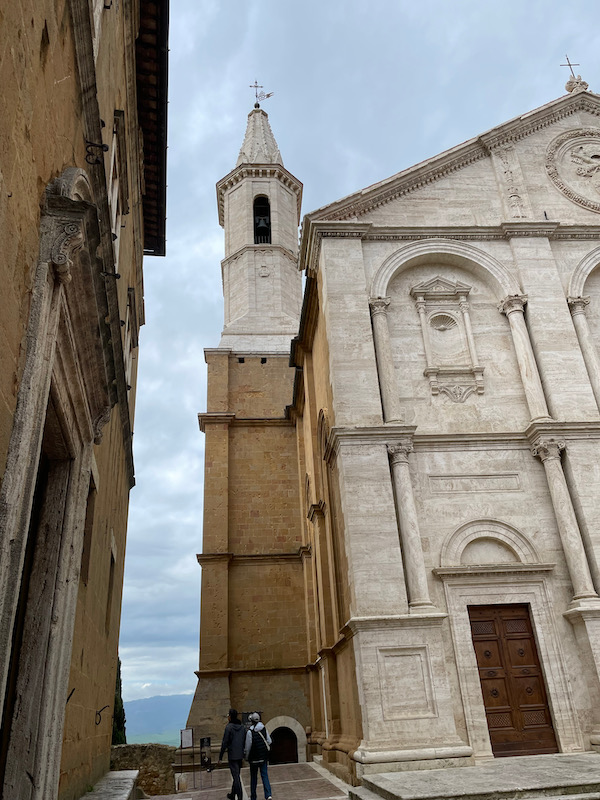

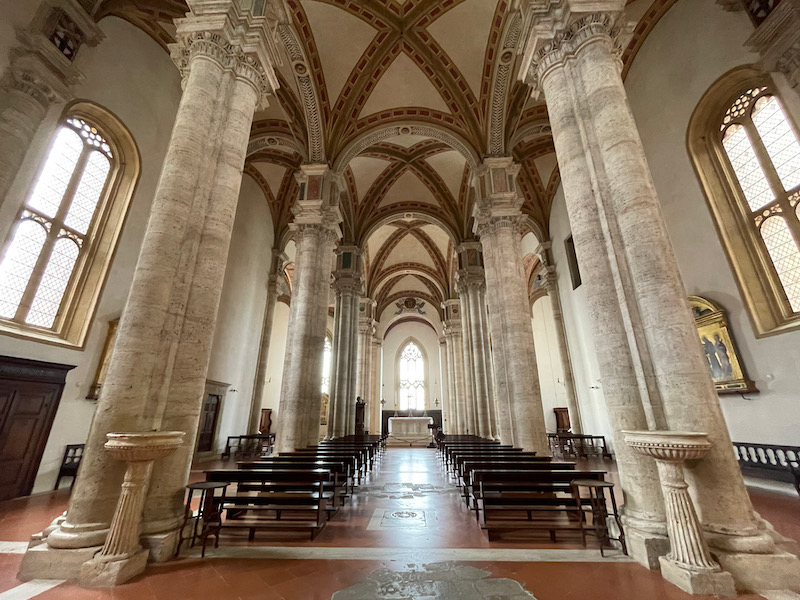
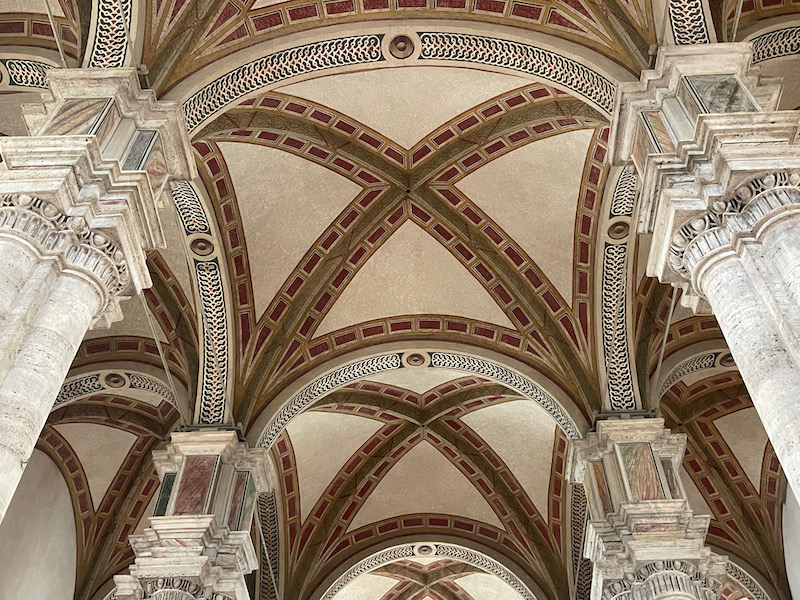
A few pieces of artwork ... Madonna and child from 1464, then a reading pulpit with inlaid wood designs from the 15th century, choir stalls from around the same timeframe, and another Madonna and child from 1463, this time surrounded by Saints Bernardino, Sabina, Francesco, and Antonio abate.
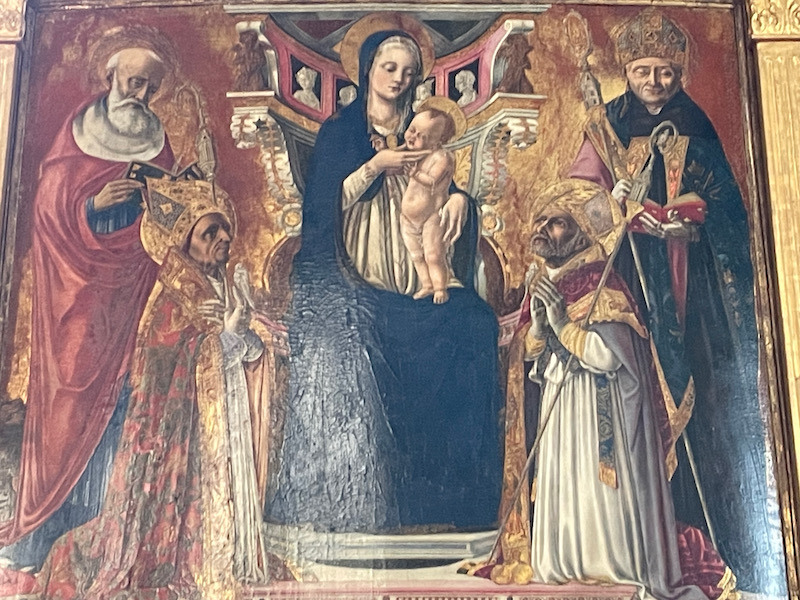
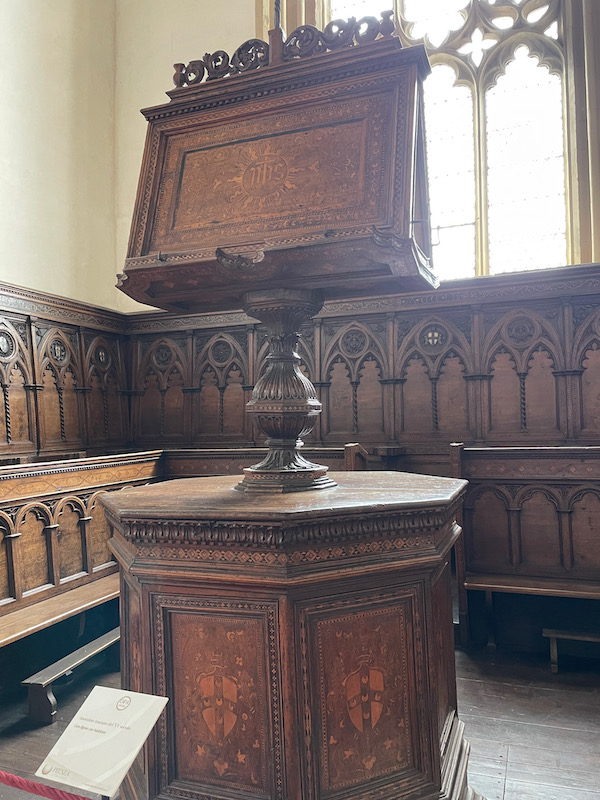
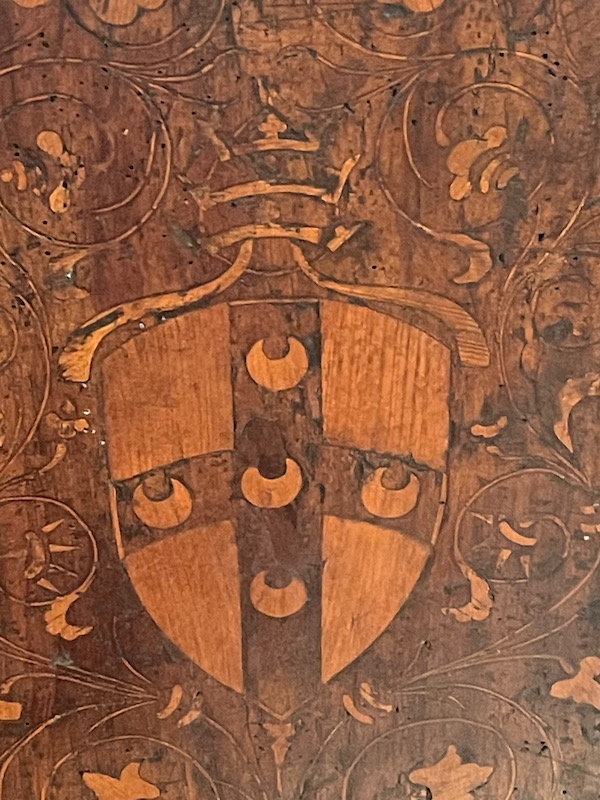
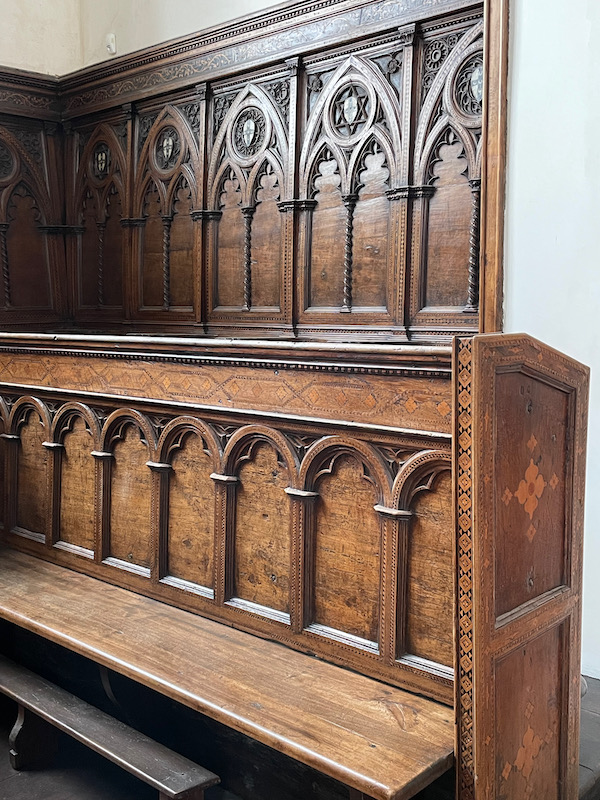
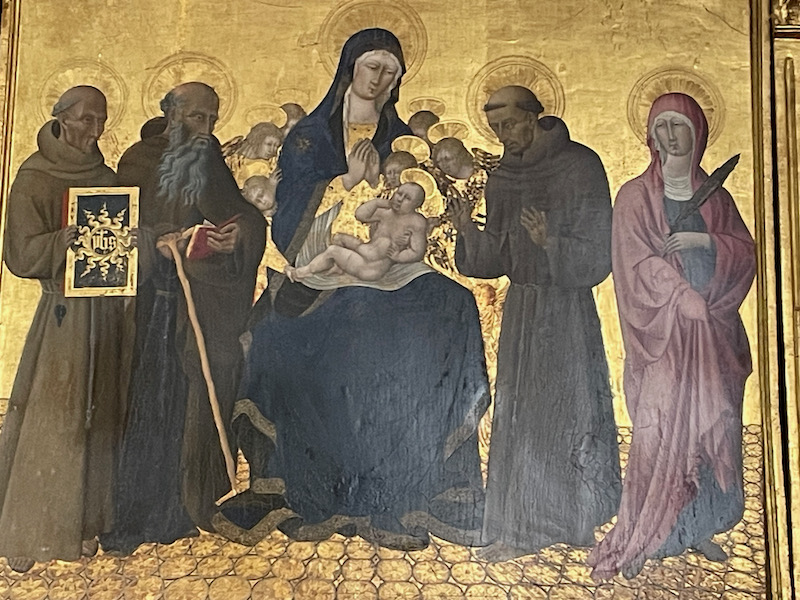
Across from the church is the town hall, or Palazzo Comunale. When Corsigniano was given the status of an official city, a Palazzo was required that would be in keeping with the "city's" new urban position, although it was certainly more for show than anything else. It has a three-arched loggia on the ground floor facing the Cathedral and above it is the council chamber. It also has a brick bell tower that is shorter than its counterpart at the cathedral, to symbolize the superior power of the church.
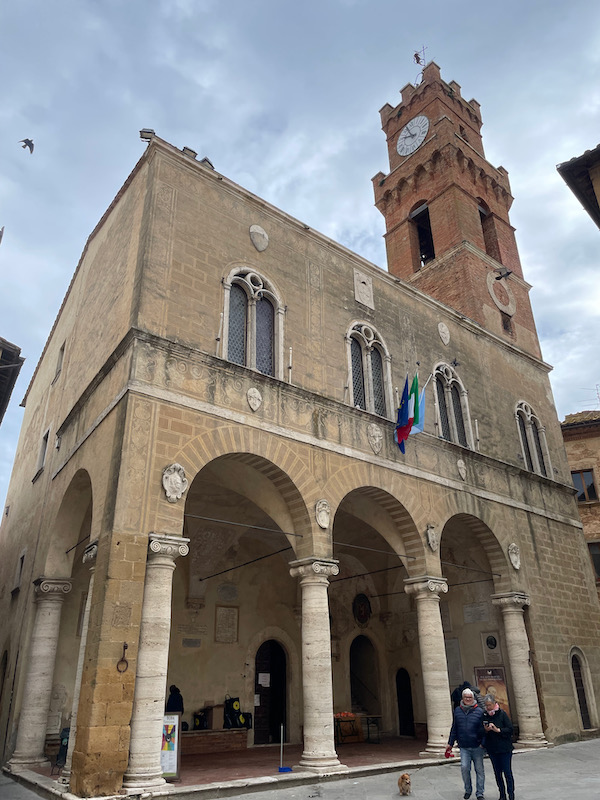
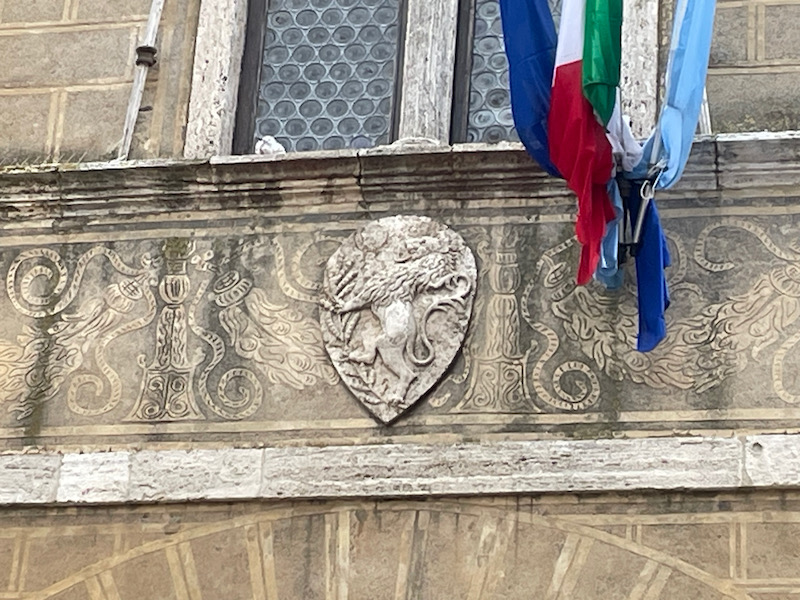
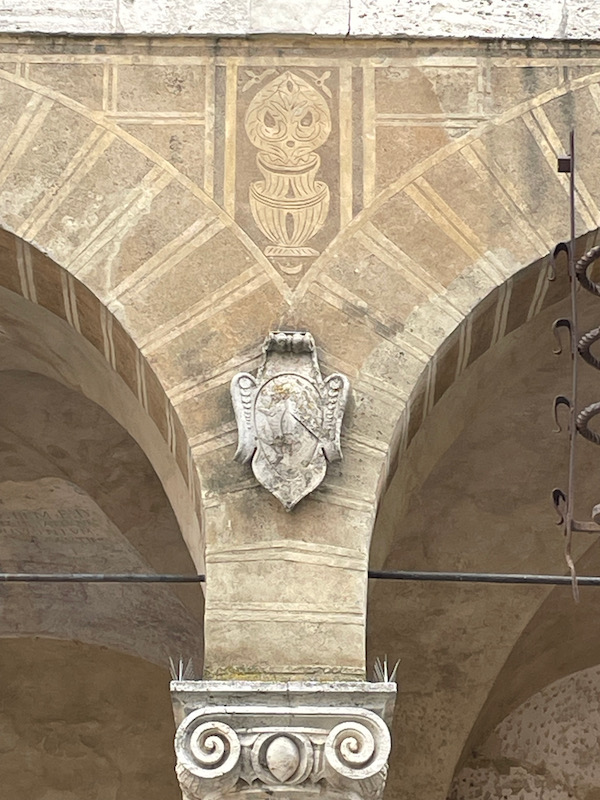
The Palazzo Piccolomini is one of the earliest examples of Renaissance architecture and was built starting in 1459. The building is now a museum, where you can visit the ancient hall of arms, Pope Pius II's study, bedchambers, the art and sculpture collection he built. In front of the building is a well with the Piccolomini coat of arms and Pope Pius II's name.

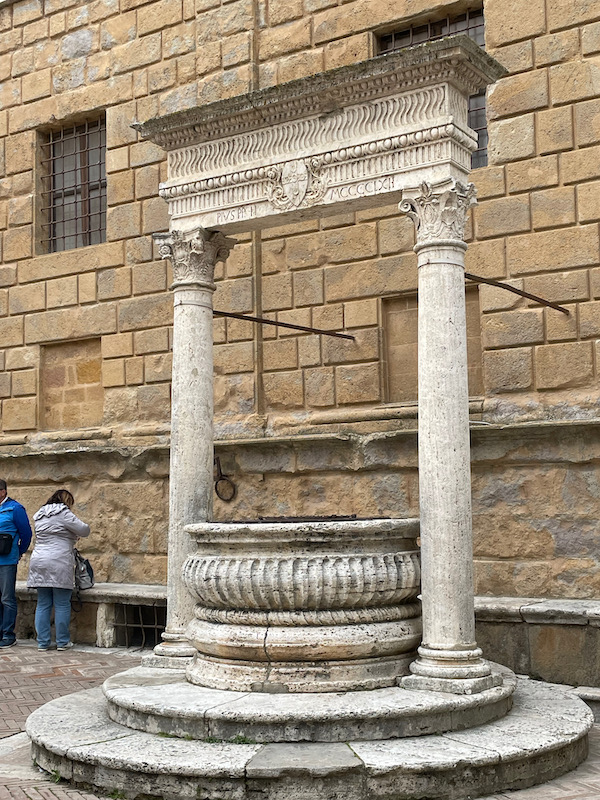
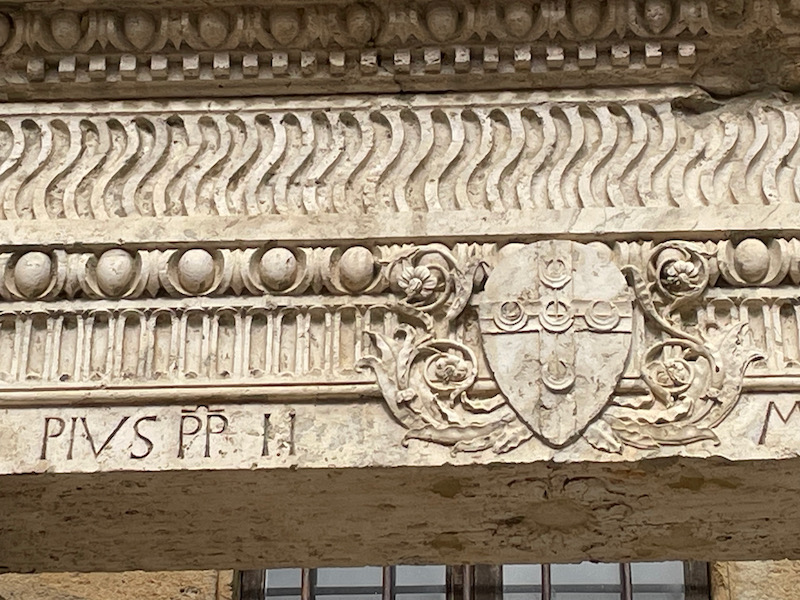
The courtyard has a loggia supported by stone columns. Below the medieval windows runs a frame with the family crests, in stone, with the apostolic insignia in gold and silver. Unfortunately, there was work being done with a crane in the middle of the courtyard, so the pictures aren't that great.
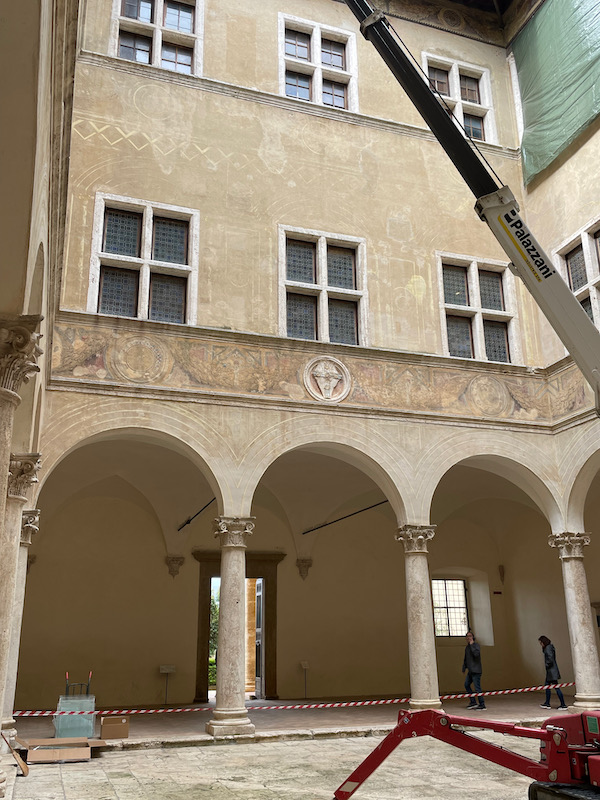

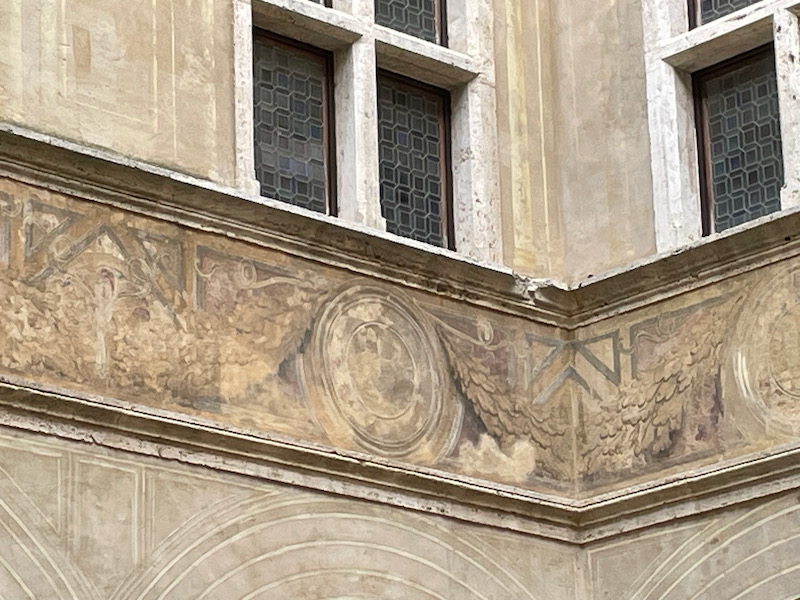
As Lucy and Tom relax at the well, I wanted to mention that in the 3rd season of the TV series "Medici" (perhaps shown on NetFlix), many scenes were shot NOT at the Medici Palace and courtyard in Florence, but the Piccolomini Palace and square here in Pienza.
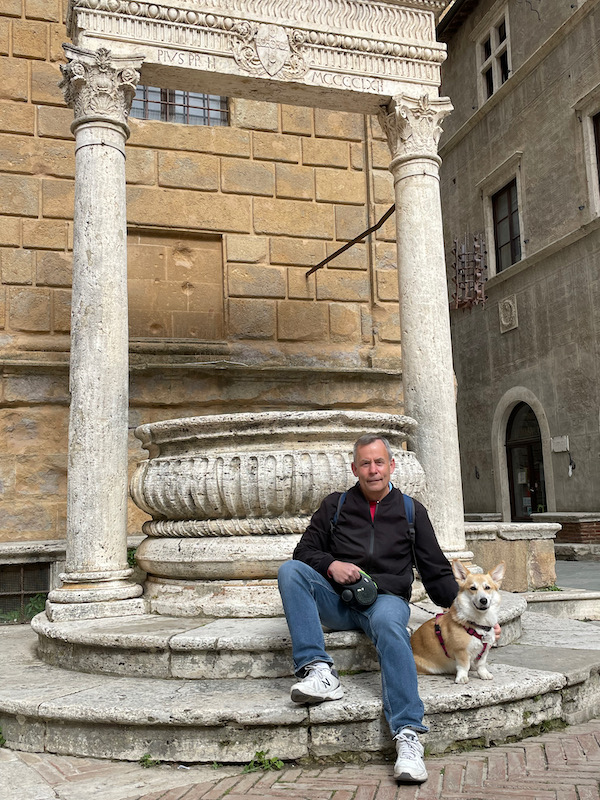
A few pictures from around town, showing the narrow streets with some interesting buildings. A couple of buildings have these wrought-iron hooks, maybe originally for tying up horses.
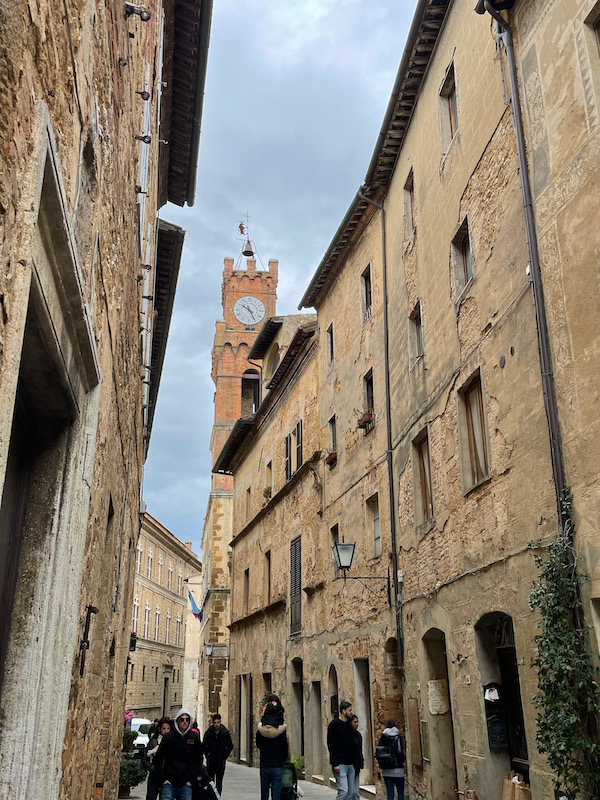
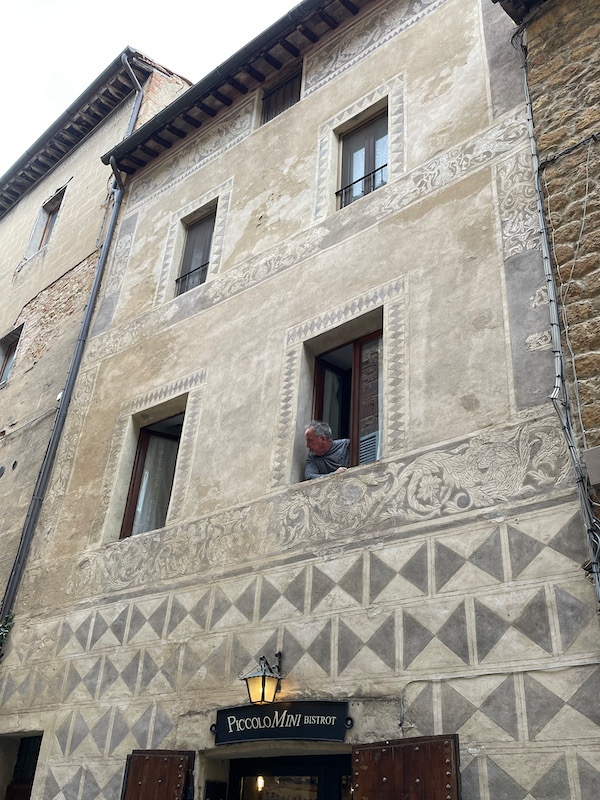
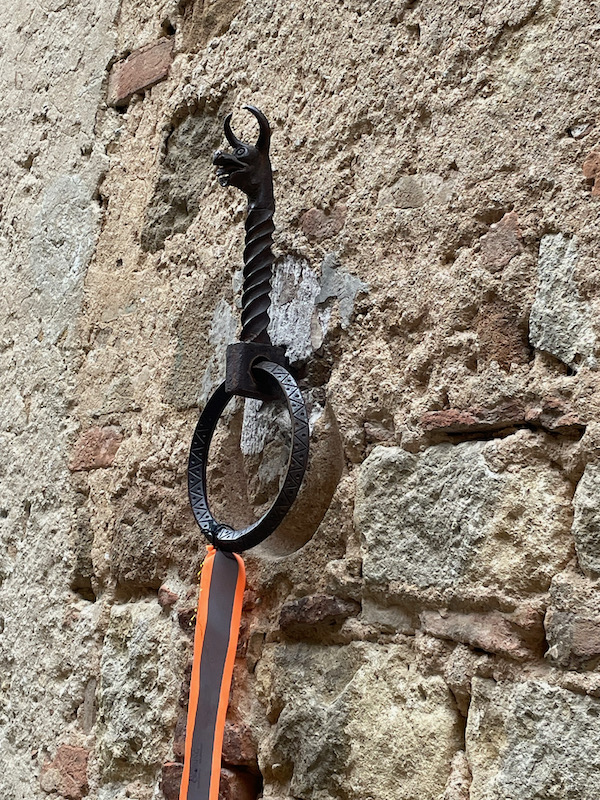

We try to get Lucy to pose in various places, including here on the city walls, with the cathedral in the background.
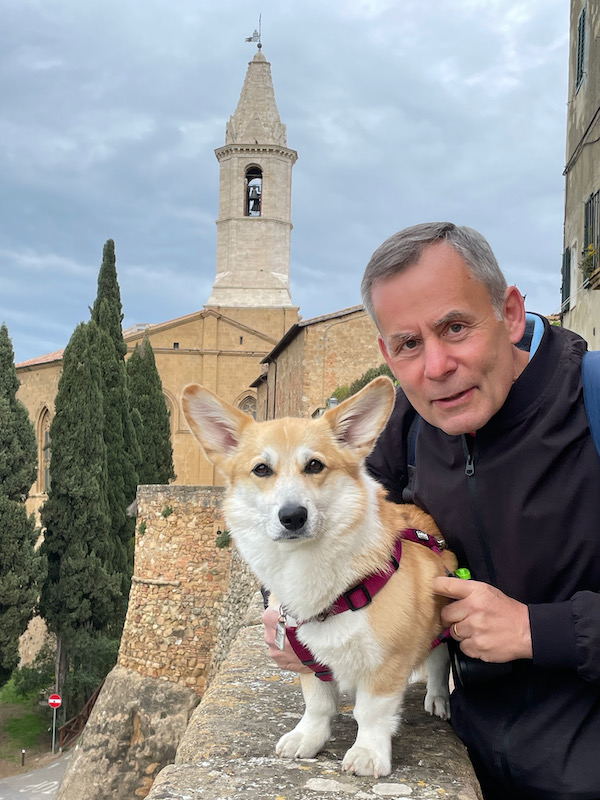
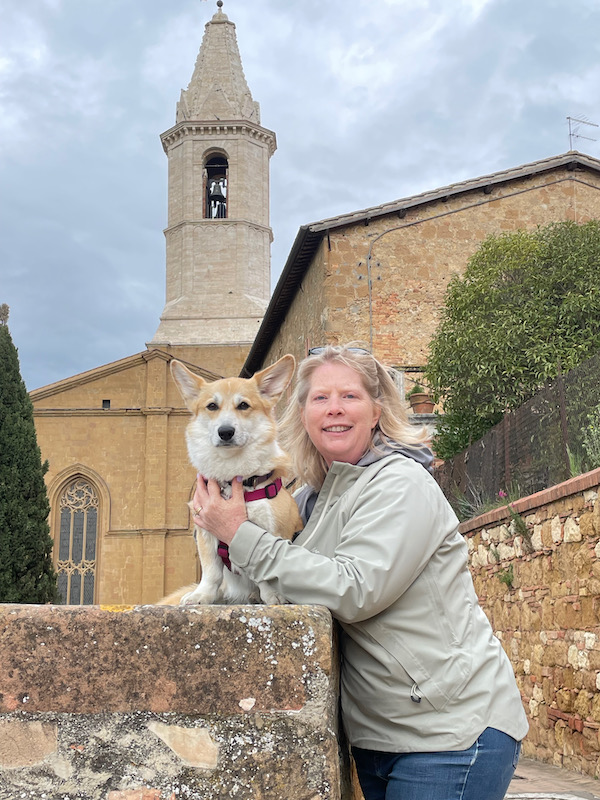
Chiesa San Francesco is a Gothic-style church founded in the 13th century by Franciscans from the monastery of Corsignano. The exterior is rustic and incomplete, but the interior once was densely populated by 14th-century frescoes, of which only a few remain. The frescoes depicting the life of Saint Francis (hence the name of the church).
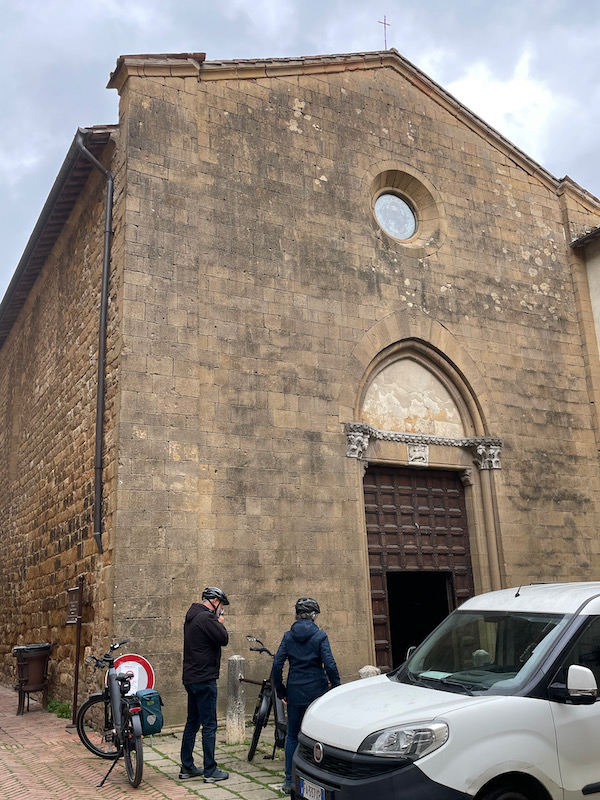
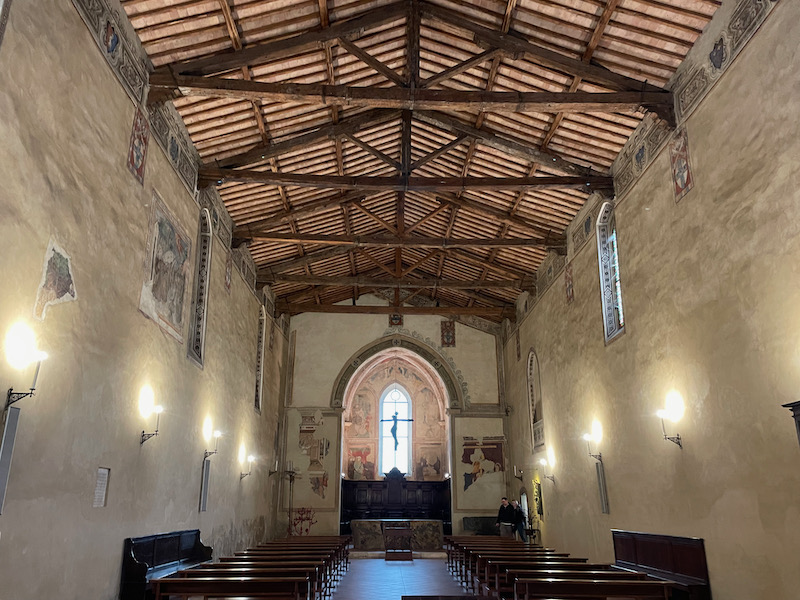
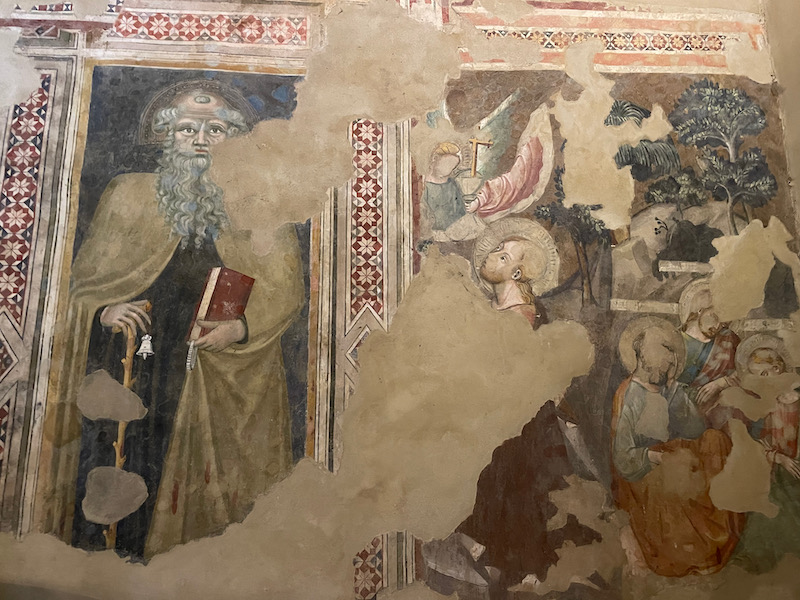
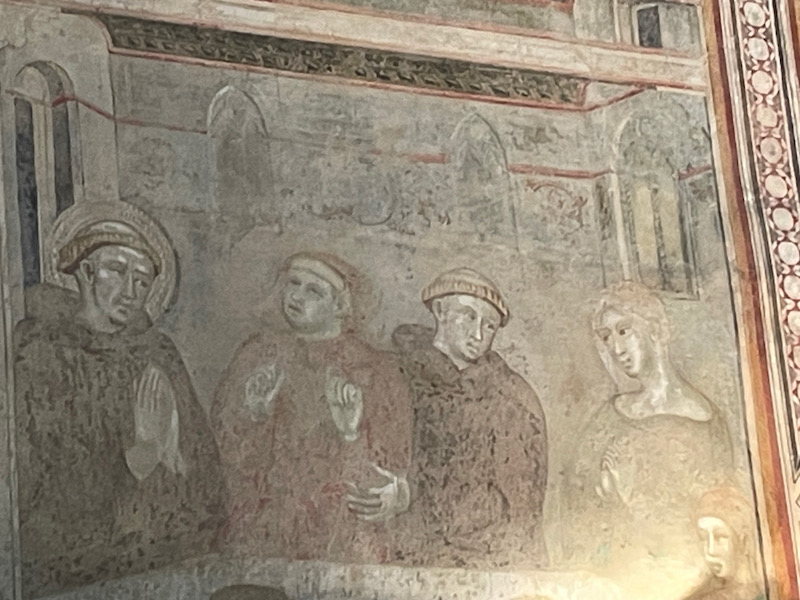
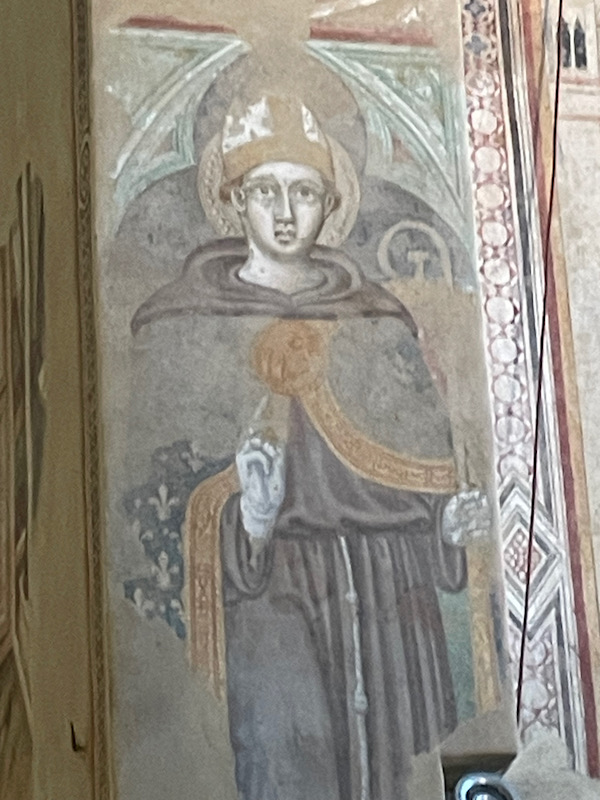
Pecorino di Pienza is a recognized cheese from the town that is matured in oak barrels. We stopped by a shop and picked up a couple different types to try ... just look at all of the different offerings!!
